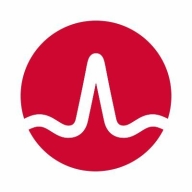

Find out what your peers are saying about Palo Alto Networks, Wiz, SentinelOne and others in Container Security.
| Product | Market Share (%) |
|---|---|
| Red Hat Advanced Cluster Security for Kubernetes | 2.1% |
| Wiz | 13.3% |
| Prisma Cloud by Palo Alto Networks | 9.0% |
| Other | 75.6% |
| Product | Market Share (%) |
|---|---|
| Symantec Data Center Security | 2.5% |
| Illumio | 19.5% |
| Akamai Guardicore Segmentation | 18.8% |
| Other | 59.2% |


| Company Size | Count |
|---|---|
| Small Business | 6 |
| Midsize Enterprise | 2 |
| Large Enterprise | 4 |
| Company Size | Count |
|---|---|
| Small Business | 4 |
| Midsize Enterprise | 2 |
| Large Enterprise | 5 |
Red Hat Advanced Cluster Security for Kubernetes is a Kubernetes-native container security solution that enables your organization to more securely build, deploy, and run cloud-native applications from anywhere. With its built-in security across the entire software development life cycle, you can lower your operational costs, reduce operational risk, and increase developer productivity while improving your security posture immediately. In addition, Red Hat Advanced Cluster Security integrates with security tools and DevOps in an effort to help you mitigate threats and enforce security policies that minimize operational risk to your applications. It also enables you to provide developers with actionable, context-rich guidelines integrated into existing workflows, along with tooling to support developer productivity. The solution is suitable for small, medium, and large-sized companies.
Red Hat Advanced Cluster Security for Kubernetes Features
Red Hat Advanced Cluster Security for Kubernetes has many valuable key features. Some of the most useful ones include:
Red Hat Advanced Cluster Security for Kubernetes Benefits
There are many benefits to implementing Red Hat Advanced Cluster Security for Kubernetes. Some of the biggest advantages the solution offers include:
Reviews from Real Users
PeerSpot user Igor K., Owner/Full Stack Software Engineer at Maraphonic, Inc., says, “The solution allows teams to create their own virtual spaces and share resources. The most valuable feature is the ability to share resources.”
Docker containers make it easy to develop, deploy, and deliver applications where containers can be deployed and brought down in a matter of seconds. This flexibility makes it very useful for DevOps to automate deployment of containers. Symantec Data Center Security: Server Advanced provides agentless Docker container protection that allows you to achieve the performance benefits of Docker without sacrificing security. Full application control enables administrator privilege de-escalation, patch mitigation, and protection against zero day threats in today's heterogeneous data centers.
We monitor all Container Security reviews to prevent fraudulent reviews and keep review quality high. We do not post reviews by company employees or direct competitors. We validate each review for authenticity via cross-reference with LinkedIn, and personal follow-up with the reviewer when necessary.